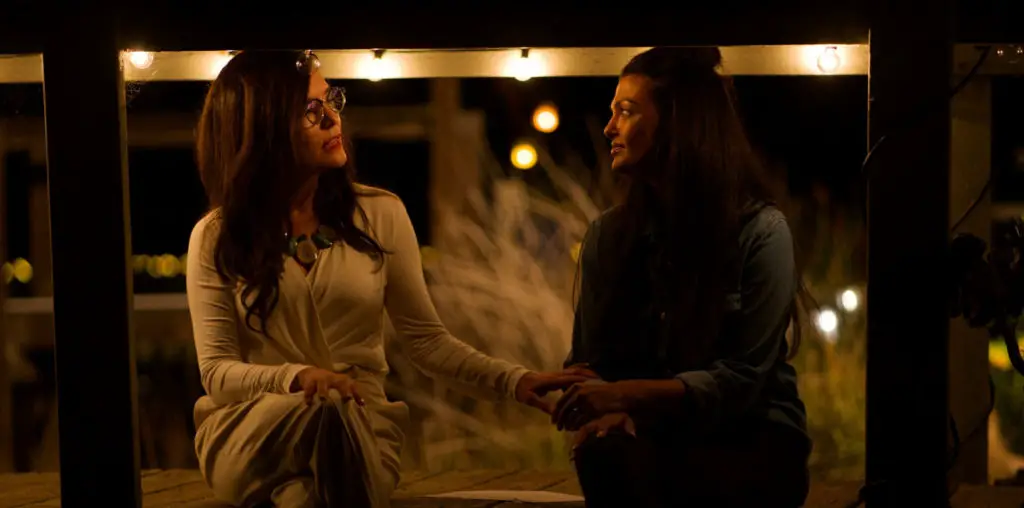
By day, Dr. Jon Mirsalis is the Director of the Toxicology Laboratory at SRI International, where he is in charge of the drug development program for all AIDS drugs developed by the National Institute of Allergy and Infectious Diseases. He is also the author of over 100 articles which appeared in the world’s most prestigious scientific journal.
But when the workday is over, Dr. Mirsalis takes on a very different role: as a one-man preservation campaign to save the artistic legacy of the silent cinema’s most versatile star, Lon Chaney. Through his indefatigable research, Dr. Mirsalis has located and preserved Lon Chaney films which were long considered to be lost. His web site Chaney Fan Web Site is the Internet’s richest resource on the career of the fabled “Man of a 1,000 Faces” and has helped introduce a global audience to an artist whose reputation somehow got mucked up over time through popular misconceptions and the deficit of surviving examples of his work.
Lon Chaney’s name survives today more by default than design. To many people, he was the first major horror movie star–although less than a dozen of his 160 film appearances in a career spanning 1912 to 1930 were made in horror films (this misperception can be attributed to Chaney’s fabled use of make-up and his talent for playing sinister and deformed characters). Only 31 of Chaney’s films survive in something resembling a complete form, and even his two best-known performances–as the title roles in “The Hunchback of Notre Dame” and “The Phantom of the Opera”–cannot be properly appreciated since both films have long been missing footage from their original prints. Another seven Chaney films survive with missing reels and another five came down through the years as fragments.
Why Lon Chaney, of all people? “To tell this story I have to back up to one of my earliest memories,” explains Dr. Mirsalis, speaking with FILM THREAT from his home in the San Francisco Bay Area. “It was 1956 and I was about 4 years old when my parents let me go to bed early one night so I could wake up to watch “King Kong” on the late show. I vividly remember sitting in our basement watching on what was probably a 13″ TV screen and I was mesmerized. That’s what first got me hooked on horror films and I went on to become a rabid horror/sci-fi/fantasy addict. In the late 50’s I discovered the Famous Monsters of Filmland Magazine at about Issue #10 and I became a subscriber. Forrey Ackerman (the magazine’s legendary publisher) had a feature in every issue called “Lon Chaney Shall Not Die.” I was fascinated by this monthly photo, not just because of how great the makeup was, but because I had never *heard* of any of these films. It never dawned on me at the ripe old age of 8 that there was such a thing as a lost film.”
As a child, Dr. Mirsalis tried to seek out Chaney pictures, but was unable to locate them until his senior year in high school when he saw “The Hunchback of Notre Dame.” By the freshman year in college, he finally got to see “The Phantom of the Opera.” “For a long time those were the only two Chaney films that I, or anyone else, had access to,” he says. “The summer before my senior year in college I fell in with a group of film collectors in the Cleveland area where I lived: Rick Green, Ron Turk, Harold Hirsch, Marilyn and Linda Rowe, and David Drazin (to name a few) got me more interested in silent films, and I learned that you could actually *buy* prints of films through companies such as Blackhawk Films, Griggs Moviedrome, and other distributors.”
Over the next several years, while living on a graduate student stipend, Dr. Mirsalis began to buy 8mm prints of Chaney films which were less-well-known than the two classic titles he had seen, such as “The Shock,” “Nomads of the North,” “Outside the Law,” “Shadows, “The Trap” “Through festivals and university programs I also got to see more and more of Chaney’s features,” he adds. “The more I saw, the more I loved him. I began collecting material for what I thought would eventually become a book in 1974, and this material eventually made it to my web site.”
Today, Dr. Mirsalis’ Chaney collection includes 16mm prints of most of the star’s extant features plus more than 1,000 stills. However, Dr. Mirsalis’ love for all matters Chaney stretched beyond mere collectionist hobbytime into a highly successful second career as a film preservationist and programmer. Indeed, the survival of several Chaney films can be attributed to his tireless efforts to track down, restore, and present missing titles.
“I’ve loved doing the projects I’ve been involved in, not because I’ve made any enormous contributions to film preservation, but because through me the films got seen by others,” he says. “The biggest job I did was for “The Road to Mandalay.” This existed only in a 9.5mm French print that was cut down from about six reels to four. I got access to a surviving 9.5mm print in the hands of a private collector, had one of the two labs in the world who still did 9.5mm blow it up to 16mm, then I took the original titles from the cutting continuity, made title cards, and cut them into the print, adding a few bridging titles where continuity was a little ragged. The film was still under copyright, so I ended up selling the entire thing to MGM (shortly before Ted Turner bought them).”
Despite the time, money and energy which went into saving this lost film, Dr. Mirsalis did point out one tiny downside to the effort. “I’d be happier of course if “The Road to Mandalay had turned out to be a good picture! After all the work I put in, I have to say it is one of Chaney’s worst pictures!” On the positive side, Dr. Mirsalis also tracked down and restored “The Scarlet Car” and “By the Sun’s Rays,” which are now available on home video through Kino International, and he also financed the preservation work done on the only home movies ever shot on Chaney, which now reside in the Pacific Film Archive.
Dr. Mirsalis has also programmed film presentations which help introduce contemporary audiences to the Chaney magic as it was originally meant to be seen: on the big screen. For filmgoers who only know Chaney from “The Hunchback of Notre Dame” and “The Phantom of the Opera,” the reaction has been nothing short of a revelation.
“When I show “The Penalty,” “The Unknown” and “Tell it to the Marines, it usually blows audiences away because these films are so good,” he says. “But the silent version of “The Unholy Three,” “Laugh Clown Laugh,” “The False Faces” and “West of Zanzibar” also go over really well. I actually take perverse pleasure in finding groups of silent movie novices who think that all silent films are Chaplin comedies or Mary Pickfordesque sweetness, and I run something like “The Unknown” or “The Penalty” where Chaney is having body parts chopped off. They usually sit there with their jaws in their laps for most of the picture!”
Dr. Mirsalis has mixed feelings about Chaney’s status as a horror icon. “I think Chaney’s “horror” status has given him a cult following that has helped elevate his status. But the horror label is really inappropriate. “Hunchback” and “Phantom” aren’t truly horror films. Would you call Disney’s “Hunchback” a “horror cartoon” or the Lloyd Weber show a “horror musical”? I think not. Many of Chaney’s films were macabre, but he did lots of roles as clowns and detectives, and one of his finest roles is in “Tell it to the Marines” where he even has a love interest.”
One of Chaney’s genuine horror films is also one of the most sought after lost films in cinema history. The 1927 MGM production of “London After Midnight,” directed by Tod Browning was Hollywood’s first vampire film, and the stills of Chaney in a black cape, top hat and razor sharp teeth clearly helped to define the popular movie image of vampires. (Browning later returned to the subject with Bela Lugosi in “Dracula.”) While “London After Midnight” is among the American Film Institute’s top ten missing films, Dr. Mirsalis believes the aura surrounding it is less than deserved.
“The photos of Chaney as the vampire look fascinating and it’s a Tod Browning film, so I’m sure that contributes to the excitement,” he says. “In reality, the film is probably a stinker. Film historians Bill Everson and David Bradley both saw it in the 50’s before the print was destroyed in a vault fire, and both told me it was a dog. “Three minutes of vampire footage and five reels of Polly Moran comic relief” is how Bill described it. I am very doubtful it will turn up, at least not complete. In the past 30 years, the only MGM Chaney picture that turned up that was a complete surprise was a couple minutes of footage from “Thunder.” Other than that, there have been no other MGM Chaney discoveries. MGM kept tight control of their prints and you just aren’t going to find this turning up in the attic of a projectionist. So I am doubtful that we will see any of the lost Chaney MGMs turn up, but I’d love to be proven wrong.”
Rather than seek out “London After Midnight,” Dr. Mirsalis would be more intrigued in locating Chaney’s lost early comedies: “Poor Jake’s Demise,” “Almost an Actress” and “An Elephant on His Hands” (all from 1913) plus the big-budget 1914 French Revolutionary drama “Richelieu” and the 1915 offering “The Chimney’s Secret” which was directed by, written by, and starred Chaney in a dual role.
However, there are several Chaney films which Dr. Mirsalis would like to see permanently lost: bootleg copies of the films which he’s helped to preserve. “I have no patience with bootleggers, especially since Turner has done a pretty good job of getting this stuff shown legally,” he complains. “I go thermonuclear when I see copies of “Road to Mandalay” for sale, because I *never* let anyone have access to this material for video transfers–but I did loan my print to several festivals before Turner had their own projection print, and I suspect some scumbag ran off a copy of it.”
Chaney died shortly after the 1930 talkie remake of “The Unholy Three,” in which he displayed a vocal versatility which suggested a long career in sound films. Where would his career have gone in talkies? Says Dr. Mirsalis: “Look up a Wallace Beery filmography! I think Lon would have been steered out of macabre roles and into the kind of tough guy role that Beery made famous. He would have done a lot of detectives and drill sergeants.”
Dr. Mirsalis’ work in preserving the Chaney legacy continues to pay off. The Turner Classic Movies channel is planning a special festival of the surviving Chaney films for October. And in bringing a greater appreciation to Chaney’s work to today’s audiences, Dr. Mirsalis noted a rather amusing introspective observation. “I learned that even someone with two Ph.D. degrees (in toxicology and genetics) can get addicted to a movie star in much the same way that teenage girls go nutso for Leo DiCaprio today!”
Dr. Jon Mirsalis can be reached online at [ ChaneyFan@aol.com ] and via his Chaney Fan Web Site.


Very interesting information about Lon and Dr. Jon I hope to email him shortly!